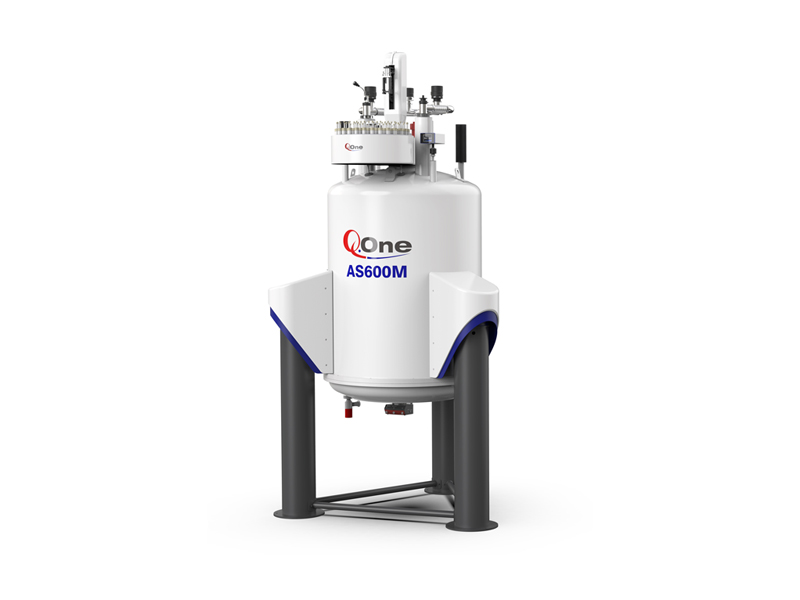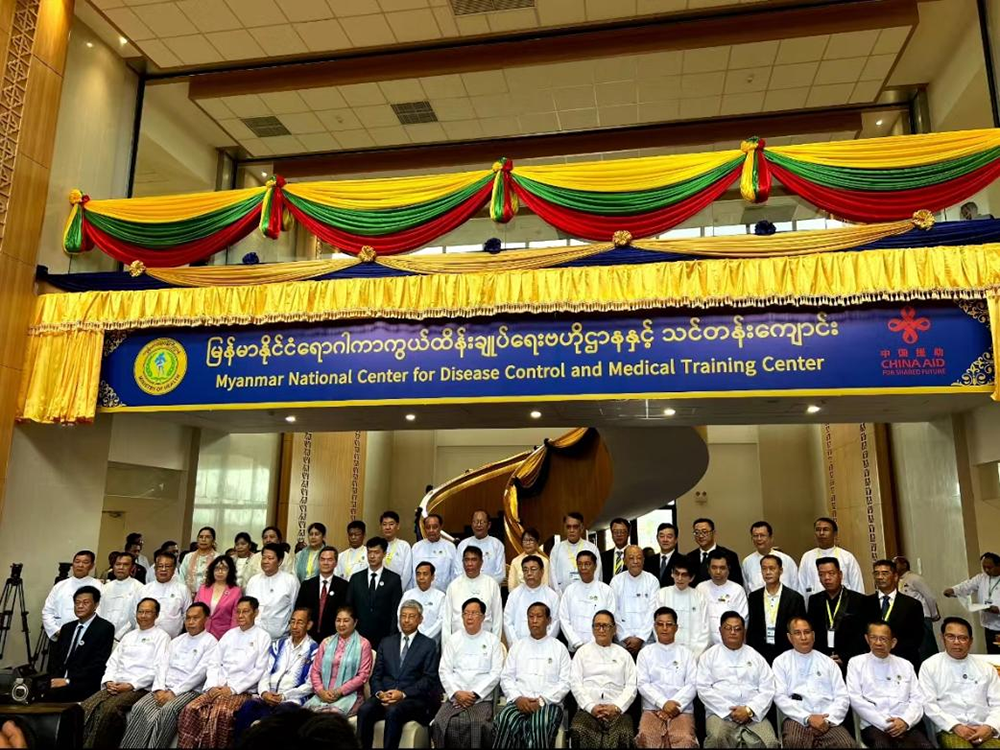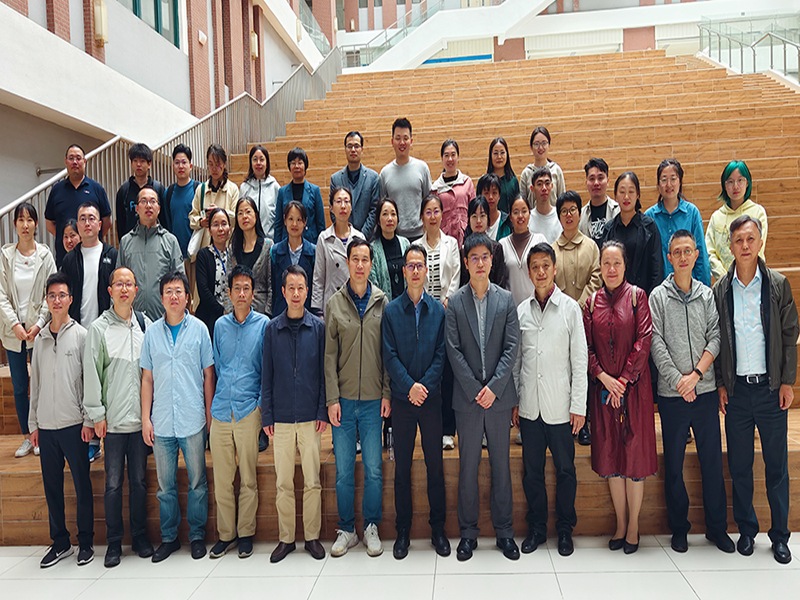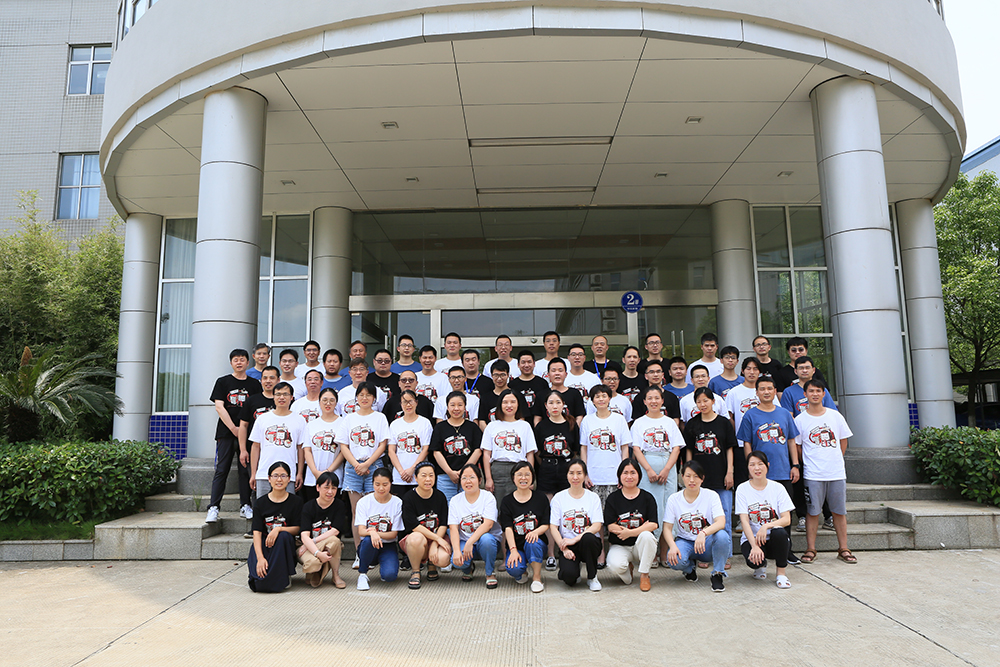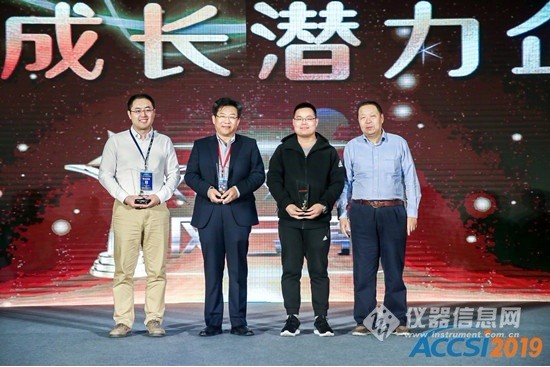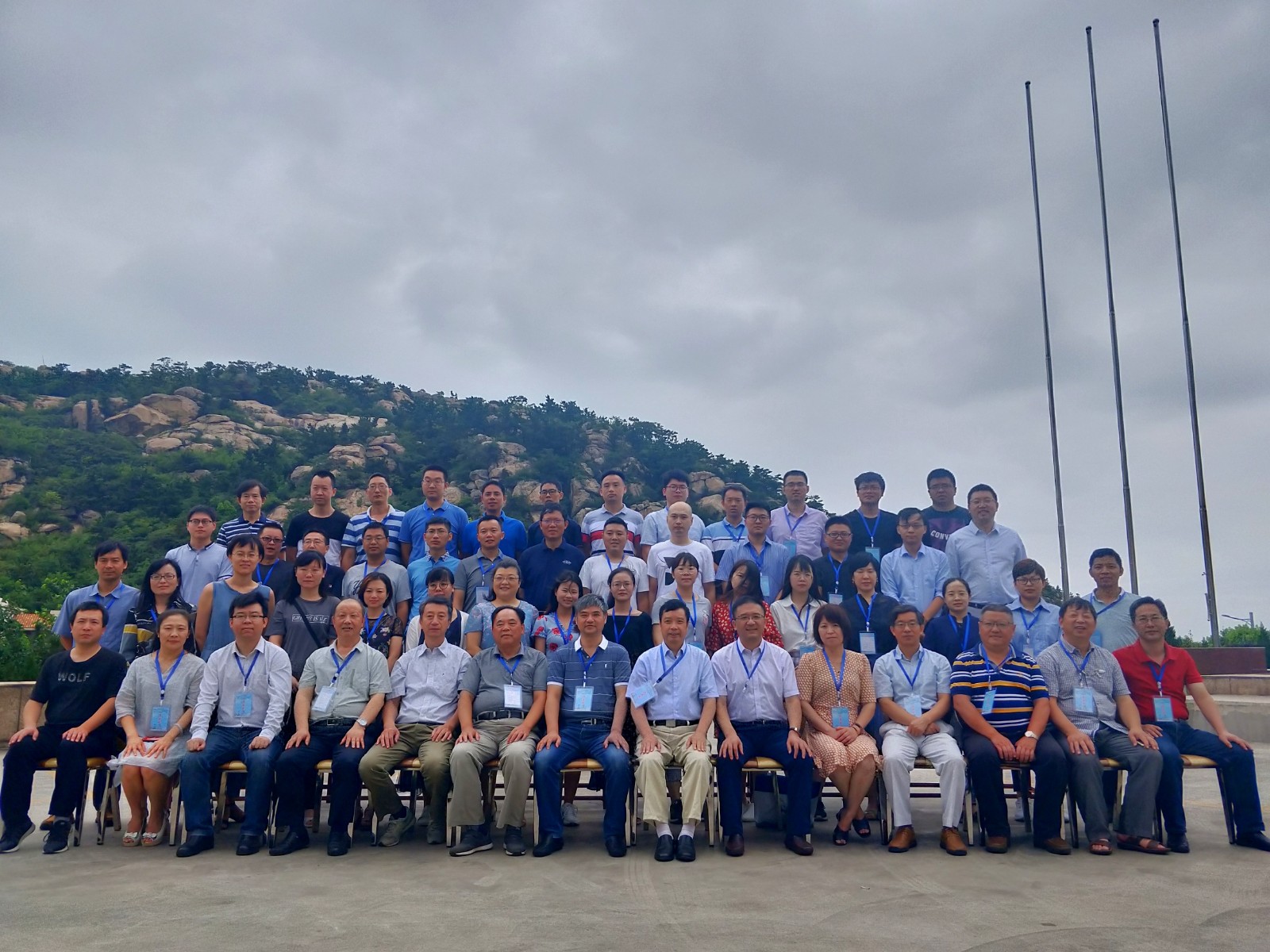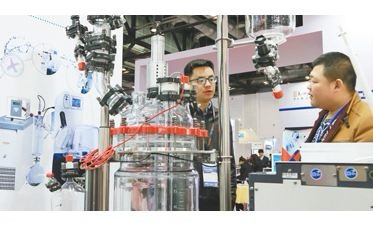Original text reprinted from: People's Daily
At the 17th China International Scientific Instruments and Laboratory Equipment Exhibition held recently, participants exchanged ideas.
Image of China
To do a good job, one must first sharpen their tools. The practice of modern technological development has shown that scientific research instruments are indispensable tools and means for scientific research. Whoever breaks through in scientific research instruments first often occupies the first mover advantage in scientific research.
In recent years, China has made positive progress in the localization of scientific research instruments. However, due to various reasons such as insufficient historical accumulation, the situation of high-end scientific research instruments relying on imports has not been fundamentally improved. In the journey of building a world technology powerhouse, how to quickly achieve localization of scientific research instruments, especially high-end scientific research instruments, has become an important issue that cannot be avoided.
What is the current status of independent research and development of high-end scientific research instruments in China? What are the difficulties faced in the localization process of high-end scientific research instruments, and how should we proceed in the future? Starting today, this edition will publish a series of reports on "Focusing on the Localization of High end Scientific Research Instruments" to explore these issues. Please stay tuned.
——Editor's note:
To become a research powerhouse, one must first become an instrument powerhouse
Recently, the first "frontal view" of a black hole in human history was released, attracting widespread attention worldwide. This' photo 'was taken by scientists from over 30 research institutes around the world through a virtual telescope network consisting of 8 radio telescope arrays distributed in different regions of the world.
The successful shooting of black hole "photos" cannot be achieved without the use of radio telescopes. The practice of modern technological development has shown that the achievement of major scientific research results is often led by breakthroughs in scientific instruments and technological means; The progress of scientific instruments represents to some extent the direction of scientific frontiers and is also an important support for promoting technological innovation.
According to incomplete statistics, 68.4% of the Nobel Prize in Natural Sciences, 74.6% of the Nobel Prize in Chemistry, and 90% of the Nobel Prize in Physiology or Medicine are achieved through various advanced scientific instruments or directly related to the development of new instrument methods or functions.
Xiao Liye, a researcher at the Institute of Electrical Engineering of the Chinese Academy of Sciences, told reporters: "With the development of human understanding of nature in the direction of more microcosmic space-time scale, larger cosmic space-time scale and more extreme physical conditions, traditional scientific research methods are no longer fully competent. Especially in the experimental research field, without high-end scientific research instruments, it is difficult to make major original innovative scientific research achievements."
The development of high-end scientific research instruments has also improved the efficiency of technological innovation. Zhang Feng, vice president of the Chinese Academy of Sciences Institute of Science and Technology Strategic Consulting, said for example: "At the beginning of the Human Genome Project, it was estimated that it would take at least 15 years to complete sequencing. With the development of large-scale sequencing methods, especially capillary electrophoresis sequencing instruments, the time was shortened by 2-3 years."
In addition, the innovation, manufacturing, and application level of high-end scientific research instruments is also an important indicator of a country's technological and industrial strength, which plays a significant role in supporting innovation activities and even economic and social development.
Although China has made significant progress in instrument technology research and product development, in the field of high-end scientific research instruments, in addition to nuclear magnetic resonance spectrometers, commonly used high-resolution mass spectrometers and other large analytical instruments, as well as most life science instruments such as magnetic resonance imaging machines, super-resolution fluorescence imaging machines, and cryogenic transmission electron microscopes, still rely heavily on imports.
Internationally, the global research instrument market is largely dominated by a few large enterprises from a few countries. In the 2018 Global Instrument Companies TOP20 ranking released by the Chemical and Engineering News magazine under the American Chemical Society, 8 companies are American, 7 are from Europe, and 5 are located in Japan.
The dependence on imports for high-end scientific research instruments has become an important factor restricting the improvement of China's independent innovation capability, "said Nian Fushun, Chief Scientist of the 41st Research Institute of China Electronics Technology Group
Yang Xueming, an academician of the CAS Member and a researcher of the Dalian Institute of Chemical Physics of the Chinese Academy of Sciences, believes that "if we cannot improve the hard power of instrument research and development, we will not be able to develop our own high-end scientific research instruments, which will not only cost a lot of money to purchase, but also be easily controlled by others."
To become a research powerhouse, we must first become an instrument powerhouse. Vigorously developing high-end research instruments with independent intellectual property rights is an important part of China's scientific and technological development, "Zhang Feng believes.
The research and product development of instrument technology in China have achieved initial results
The issue of high-end scientific research instruments relying on imports has received high attention from relevant departments. As early as 1998, the National Natural Science Foundation of China established a special project for basic research on scientific instruments. In 2011, the "National Major Scientific Research Instrument and Equipment Development Special Project" and the "National Major Scientific Instrument and Equipment Development Special Project" were established, respectively managed by the National Natural Science Foundation of China and the Ministry of Science and Technology, with one responsible for original instrument research and the other responsible for engineering and industrialization. It is reported that from 2011 to 2018, the National Natural Science Foundation of China supported 53 major scientific research instrument projects recommended by relevant central departments with a funding of over 10 million yuan, and approved a funding amount of 3.814 billion yuan; 466 major scientific research instrument projects with funding of less than 10 million yuan, freely applied for by scientific researchers nationwide, with an approved funding amount of 3.203 billion yuan; The total funding for the two types of projects exceeds 7 billion yuan.
With the support of these scientific research plans, China's instrument technology research and product development have achieved initial results. Taking the "Key Special Project for the Development of Major Scientific Instruments and Equipment" of the Ministry of Science and Technology as an example, a total of 208 projects have been arranged for the "Twelfth Five Year Plan" scientific instrument special project. Currently, it has entered the acceptance stage comprehensively, and some achievements have the ability for mass production and have been promoted and applied. During the 13th Five Year Plan period, a total of 142 scientific instrument projects were arranged, which are currently in the stage of key technology research and engineering prototype development.
Nian Fushun told reporters that it is expected that in the next few years, China's scientific instrument achievements will enter an important stage of promotion and application, which will alleviate China's dependence on foreign high-end scientific research instruments.
Wuhan Zhongke Oxford Spectroscopy Technology Co., Ltd., established by relying on the technology of the Chinese Academy of Sciences Wuhan Institute of Physics and Mathematics, has successfully launched the complete nuclear magnetic resonance spectrometer system to the market. We have successfully sold over 70 nuclear magnetic resonance spectrometers domestically and some abroad, "said Wei Jia, CEO of the company
In the context of the domestic nuclear magnetic resonance spectrometer market being dominated by foreign companies for a long time, more than 70 units are already considered quite good sales performance, "Wei Jia said." On the one hand, this is due to the long-term technical accumulation of the Wuhan Institute of Physics and Mathematics of the Chinese Academy of Sciences in the field of nuclear magnetic resonance spectrometers, and on the other hand, it benefits from the strong support of the national scientific instrument development plan
In 2007, the Wuhan Institute of Physics and Mathematics of the Chinese Academy of Sciences began to undertake the national major scientific instrument development project, and has received more than 60 million yuan of financial support for the R&D and engineering of nuclear magnetic resonance host. After years of research and development, the institute successfully developed a complete prototype in 2014. Afterwards, the institute established a company to transfer technology and promote its industrialization and market application.
The most important thing is that some senior experts in the nuclear magnetic field dare to be the first to eat crabs, "Wei Jia said
However, it should also be noted that there are not enough companies like Zhongke Oxford. Xu Jian, a researcher at the Institute of Chemistry of the Chinese Academy of Sciences, said that in most high-end scientific research instrument fields, the dependence on imports has not been improved due to weak foundation, and there is still a gap between research and development and production and the international advanced level.
The development of domestically produced high-end scientific research instruments still needs to overcome obstacles
What is holding the neck of the localization of high-end scientific research instruments?
The interviewees pointed out that the development of high-end scientific research instruments often relies on progress in basic research, and insufficient basic research in the early stage is an important factor hindering the research and development of domestically produced high-end scientific research instruments. For example, the Nobel Prize winning PCR technology (a molecular biology technique used to amplify specific DNA fragments) has driven the development of PCR instruments and significantly improved research efficiency.
Compared with foreign countries, China's overall investment intensity in high-end scientific research instruments is not high enough. From creative and key component development to building the first prototype, and finally mass production, high-end scientific research instruments not only require huge investment, but also a long time cycle. Due to the long development cycle, difficulty, high investment in manpower and resources, and high investment risk of high-end scientific research instruments, researchers are often more willing to purchase advanced instruments from abroad, and their enthusiasm for developing instruments is not high, "Zhang Feng said." Small and medium-sized enterprises engaged in instrument development often find it difficult to win the favor of venture capital funds
Xu Jian said that the high-end scientific research instrument market is dominated by large foreign enterprises, and the share left for domestic enterprises is already very small, with high investment and low returns. Some small and medium-sized enterprises are naturally unwilling to do this business. Fu Qiang, a researcher at the Dalian Institute of Chemical Physics, Chinese Academy of Sciences, has a deep understanding of this: "We once developed a technology and cooperated with an instrument company to achieve engineering, producing four or five sets and putting them into use. However, later on, the company found that the market was not large and was unwilling to invest a lot of effort to continue
The domestically produced instruments that have been successfully developed also have some degree of "hollowing out" problem. Nian Fushun said, "As the 'heart' of instrument equipment, key components directly determine the technical content of the instrument. Currently, most of the key core components used in China's instrument products, such as CPUs, photomultiplier tubes, various detectors and sensors, still rely on imports. ”
The respondents believe that the insufficient domestic production capacity of key components and basic software has compressed the profit margin of instrument manufacturers, limited the technical level of domestic instrument manufacturers, and low market recognition, which has affected the development and growth of the industry; This situation in turn reduces the procurement quantity of key components, making it difficult to form a healthy development in the industrial chain.
From the demand side, it is often difficult to gain the trust of users when promoting and applying domestically produced high-end scientific research instruments in practice. On the one hand, compared with mature foreign instruments, some domestic instruments have gaps in performance indicators, stability, and reliability; On the other hand, some researchers are influenced by research habits, such as choosing instruments from foreign brands and models to maintain consistent experimental data with existing literature.
Zhang Feng said, "Domestic high-end scientific research instruments need to be given more opportunities for 'fault tolerance' and 'trial and error'. If the units that develop and produce domestic instruments do not receive feedback, it is difficult to continue improving and perfecting them
Just as scientific research requires long-term accumulation, the localization of high-end scientific research instruments also requires a process, and it is impossible to become a fat person in one bite. The high-end scientific research instruments abroad have also matured and improved over the years of application. The interviewee believes that as long as the country continues to increase its support and relevant parties work together to overcome difficulties and make continuous efforts, the localization of high-end scientific research instruments is worth looking forward to.
For details, please click:https://wap.peopleapp.com/article/4057941/3914957?from=groupmessage&isappinstalled=0


